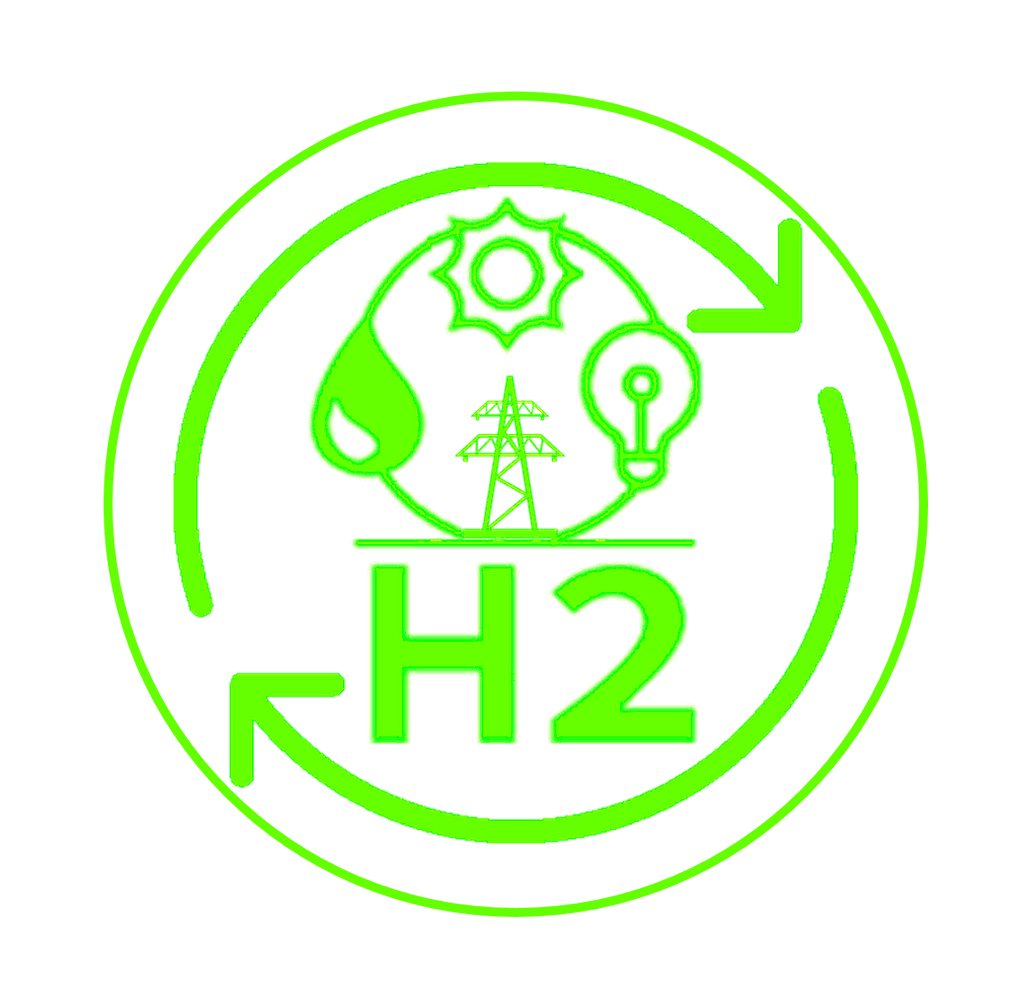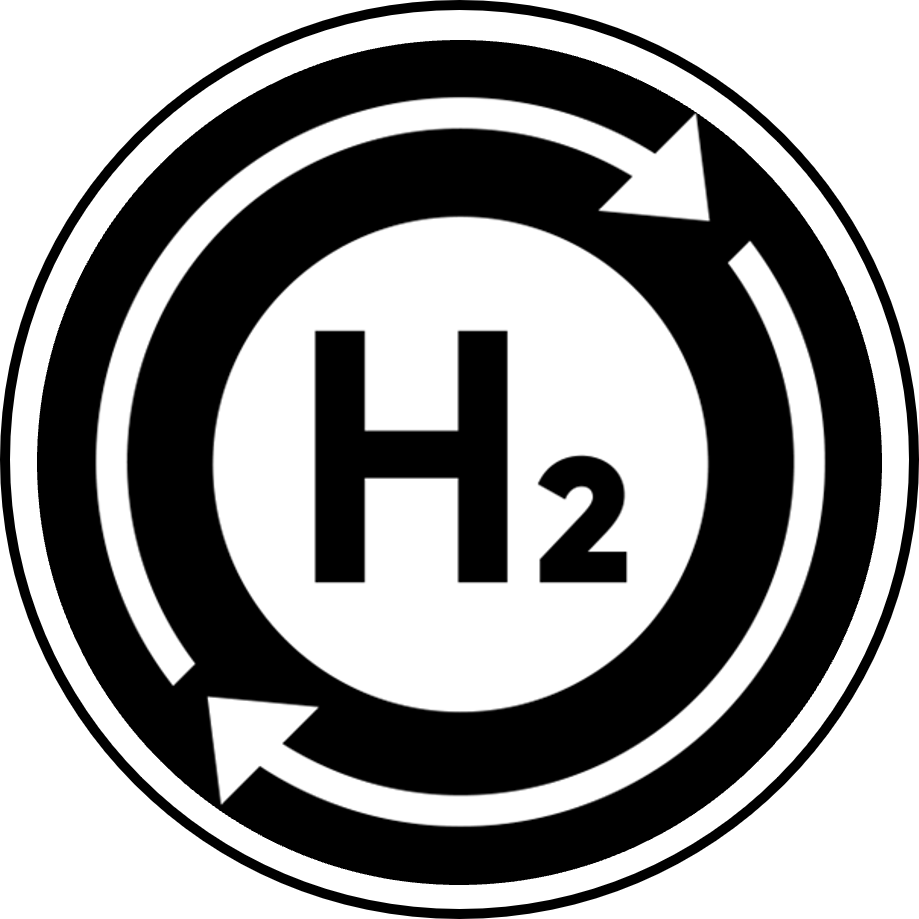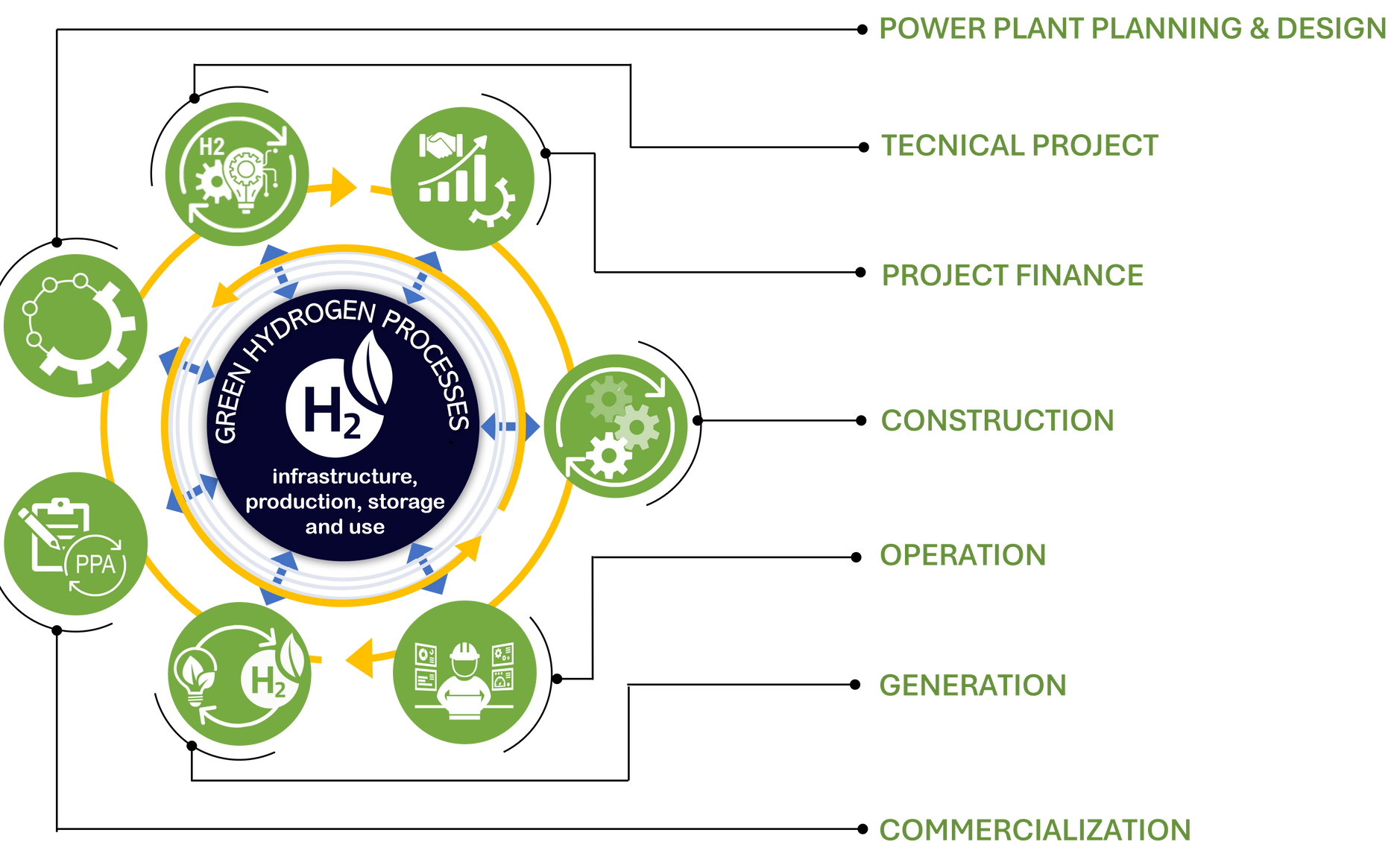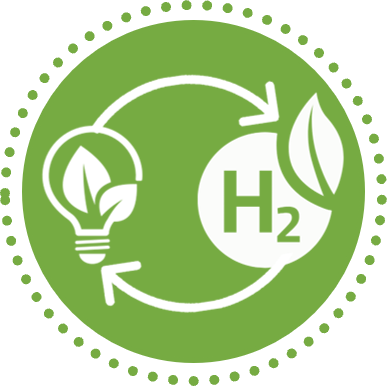DABITRON DH2SL ®
Renewable Energy Power Stration
Learn More →
Green HYDROGEN - the sustainable fuel of the future.

One of the challenges related to the integration of renewable energies into the energy system is their intermittency.
Intermittent renewables are challenging because they disrupt the conventional methods for planning the daily operation of the electric grid.
Their power fluctuates over multiple time horizons, forcing the grid operator to adjust its day-ahead, hour-ahead, and real-time operating procedures.
Take the example of solar panels. Electricity generated through solar photovoltaic panels is clean inexhaustible, contributing to sustainable local development in three different areas: social, economic, and environmental.
Solar energy is inherently only available during daylight hours, so the grid operator must adjust the day-ahead plan to include generators that can quickly adjust their power output to compensate for the rise and fall in solar generation. Furthermore, power plants that typically produce electricity all day every day might instead be asked to turn off during the middle of the day so that the energy produced from solar can be used in lieu of fossil electricity.
To effectively use renewable energy, appropriate energy storage technology will need to be developed.
Hydrogen has a critical role to play in helping the world reach net zero emissions.
Hydrogen can be used as a raw material, as a fuel or as an energy carrier. It has many possible applications in the industrial, transport, energy and construction sectors. It therefore offers a solution to decarbonise industrial processes, especially in economic sectors where reducing emissions is urgent and difficult to achieve.
Hydrogen is a versatile energy-carrying element that can be deployed to assist with a variety of energy sector goals.
Hydrogen has long been touted as the “fuel of the future”. With global momentum to achieve decarbonization driven by new targets, regulations and technological advancements in hydrogen production, that future is now - a fuel of tomorrow and today. Here are principaly reasons why hydrogen is becomes one the vital renewable energy source of tomorrow and today:
Hydrogen is a secondary source of energy. It stores and transports energy produced from other resources (fossil fuels, water, and biomass).
Clean hydrogen — produced from renewable energy, can allow for the decarbonization of a range of key sectors such as energy production, mining & minerals industry, iron and steel production, and long-haul transportation.
Hydrogen is the most common element in the universe. The first chemical element in the periodic table, hydrogen is the initial "fuel" of stars. In the universe, 92% of what is known is made up of hydrogen. It is the stuff that stars are made of and a fundamental building block of all life on Earth. Its name means "water generator" and was coined in the late eighteenth century. 70% of the Earth's surface is covered with water (H 2 O), a chemical compound made up of hydrogen (H) and oxygen (O). Hydrocarbons, such as methane (CH 4 ) and crude oil, are also important hydrogen-containing compounds. Most hydrogen is therefore found in chemical compounds: on its own it is an invisible, odorless and non-toxic hydrogen gas, lighter than air and which only liquefies at a temperature of -252°C.
It can be used to produce other compounds or as a fuel to produce energy. Is possible to produce, accumulate, move and use energy in different ways thanks to this very versatile element. It can be produced using renewable energy, nuclear, natural gas, coal and oil. The emission-free properties make green hydrogen a promising candidate for the transition to a new energy carrier. With green hydrogen, the goal of a low-carbon economy becomes achievable.
Three main types of hydrogen are "grey" hydrogen, "blue" hydrogen and "green" hydrogen.
Hydrogen produced using energy from hydrocarbons, particularly natural gas, is known as “ grey ” hydrogen.
Hydrogen produced from natural gas and later decarbonised using carbon capture and storage is sometimes called blue or decarbonised hydrogen.
Hydrogen produced via electrolysis, by splitting water into oxygen and hydrogen using electricity from renewable sources is sometimes called green or renewable hydrogen.
Yes, hydrogen is safe if handled correctly. Hydrogen is a non-toxic gas at room temperature and atmospheric pressure. Hydrogen is explosive under certain conditions when mixed with air – similar to natural gas. When handled responsibly, green hydrogen is less dangerous than other flammable fuels. Therefore, tried and tested international standards exist on how to design and monitor hydrogen installations.
Hydrogen is an energy carrier, not an energy source and can deliver or store a tremendous amount of energy. Hydrogen can be used in fuel cells to generate electricity, or power and heat.
Hydrogen has long been used in the chemical industry for many manufacturing processes. The interest in hydrogen for storage and generation of electrical energy has only been focused on more strongly in recent years. Above all, the very volatile electricity generated from photovoltaic and wind power plants strengthens the need for flexible energy storage. There are a multitude of possible applications for hydrogen technologies:
As an energy carrier, hydrogen can be converted to electricity, heat or kinetic energy and can be used:
Hydrogen technologies are mechanical or chemical applications in which hydrogen is used. A distinction can be made between five types of hydrogen technologies:
The hydrogen supply systems investigated in this work are concerned with hydrogen that is produced from water electrolysis.
The three hydrogen supply systems investigated are as follows:
Hydrogen is the most common chemical element in the universe. It can be stored as a gas or liquid, or made part of other molecules, and has many uses such as fuel for transport or heating, a way to store electricity, or a raw material in industrial processes.
Hydrogen can be produced through electrolysis, which uses electricity to split water molecules into hydrogen and oxygen, with the hydrogen being captured and used as a fuel.
Hydrogen energy can be stored as a gas and even delivered through existing natural gas pipelines.
When it is produced using renewable energy or processes, hydrogen is an emissions free fuel and becomes a way of storing renewable energy for use when it is needed.

Advantages of green hydrogen, Key technology for net-zero carbon emissions:
The conventional production method extracts hydrogen using fossil fuels. With green hydrogen, renewable energy is used to power the electrolysis process that breaks down water into hydrogen.
Low land use.
Can be used flexibly either as a fuel or raw material.
Unlike wind and solar energy, hydrogen can be stored. Regardless of the weather conditions, it is available at all times.
Green hydrogen can be used in several sectors, including transportation, energy and industry, can be used as a fuel, to generate electricity and heat and as a raw material in industrial processes and products, making it a versatile solution for the clean energy transition.
Green hydrogen has the potential to boost the transition to clean and renewable energy. This means that renewable hydrogen could be used to provide firming for the local electric grid, while providing stability and reliability to power grids.
Green hydrogen produces no greenhouse gas emissions during its production and use, thus contributing to the reduction of CO2 emissions and a cleaner environment. Through electrolysis using renewable energy, the only byproduct of hydrogen is oxygen which can be used for other applications or simply released into the environment. CO2 emissions can also be reduced by replacing fossil fuels and fossil raw materials with renewable hydrogen.
By reducing the use of fossil fuels, green hydrogen can help to improve air quality and reduce health risks associated with air pollution.
The development and growth of the green hydrogen industry can create new jobs and economic opportunities, particularly in the manufacturing and installation of hydrogen production and storage equipment.
Green hydrogen plays a vital role in supporting the transition to a low-carbon economy, as it provides a clean and sustainable alternative to fossil fuels.




DABITRON DH2SL ®
Renewable Energy Power Stration
Learn More →
TURNKEY
GREEN HYDROGEN PROJECTS
Hydrogen can provide a cost-effective, clean energy infrastructure, contributing to energy supply security both at local and country levels.
A 100% renewable Non-Intermittent local renewable energy generation solution that help guide the transition towards a sust ainable and decarbonised energy model.
Hydrogen energy
DABITRON New Energy Solutions - non-intermittent Renewable Energy Power Stations.
Technologies for hydrogen infrastructure.
At DABITRON we are developing projects for the production of hydrogen from renewable sources through the electrolysis of water (so-called green hydrogen). Renewable hydrogen is produced through the process of electrolysis, using renewable electricity to split water into hydrogen and oxygen and is therefore a ‘renewable fuel of non-biological origin’ (RFNBO).
Technologies for hydrogen use.
To generate zero-carbon electricity, the hydrogen used is either “green”, which means hydrogen derived from water by electrolysis using energy from renewable sources.

Hydrogen is one of the most abundant elements in the universe – DABITRON develop and provide innovative DABITRON H2 SYSTEM LOOP ® (and/ or DABITRON DH2SL ®) renewable energy power stations (on-grid/ off-grid) to encourage the adoption of hydrogen as a key player in the energy sector, that contributes to building a local energy sector with net-zero emissions. DABITRON end-to-end green electricity solutions to power electrolyzers making green hydrogen which will be used as an energy carrier to produce electricity for the local marketplace.





Renewable Power-to-Hydrogen-to-Renewable Power
non-Intermittent 100% renewable electricity supply 24/7


We are therefore focused on developing the needed infrastructure for hybrid energy projects as local Green Hydrogen Power that delivers non-intermittently 100% renewable electricity generation for a future decentralized energy world and a local Sustainable Development.

an intermittent renewable source

green hydrogen production
battery energy storage systems (BESS) and green hydrogen (H2) storage
Renewable Power-to-Hydrogen-to-Power
electrical infrastructures
commercialization of 100% Renewable Energy through PPA contracts.
hydrogen refuelling station
agrivoltaics installation
an intermittent renewable source



Describe some quality or feature of the company. Write a short paragraph about it and choose an appropriate icon.
End-To-End Solucion


site selection, financial feasibility studies and preliminary technical design, renewable power plant modelling, commitment to lease

conceptual design, front-end engineering & design (FEED), detailed design, project examination, connection request, permitting management, grid connection, lease

project finance, asset management, project structuring, engineering contract, concession agreement, construction contract, operation contract, power purchase agreements (PPA), financial modeling, M&A (mergers and acquisitions) activities, ESG (environmental, social, and governance), CSR (corporate social responsibility) managment

project management, selection of the local contractors, contracts negotiation / management, procurement, supervision of the construction works, management and plant commissioning

final testing and commissioning, monitoring, remote supervision of the plant, operations & maintenance management, project performance testing, performance evaluation & optimization, asset management and admin related services of the project, financial and energy reports.

on-site generation of non-intermittent 100% renewable electricity continuous supply 24/7 and production of renewable hydrogen, hydrogen refuelling station, supply management, renewable energy certificate (REC), Certification of Renewable Fuels of Non-Biogenic Origin (RFNBOs), aset management

long-term green power purchase agreements (PPA), customer contract management, customer service operations
(Best Technical Solutions Available)
Non-Intermittent 100% renewable electricity supply 24/7 a low cost.
100% Renewable Energy
Unwavering Environmental Stewardship
100% Renewable Energy
Turnkey power generation hybrid projects grid-connected or off-grid (stand-alone) end-to-end solutions.
"Renewable Energy – the green power solution for Building a Sustainable Future"
DABITRON is a company in energy market operations. We harness the earth’s most abundant resources – the heat of the sun, the purity of the water and humidity in the air – to power a sustainable future with local 100% renewable energy with zero environmental impact. Combining utility-scale solar, storage, hybrid energy, and grid solutions as well as entire hydrogen value chain and tailored services, DABITRON planning, develops, constructs, operates 100% Renewable Power Plants projects and markets (PPA) the renewable energy produced.
All Rights Reserved | DABITRON MICROGRID CANARIAS S.L.